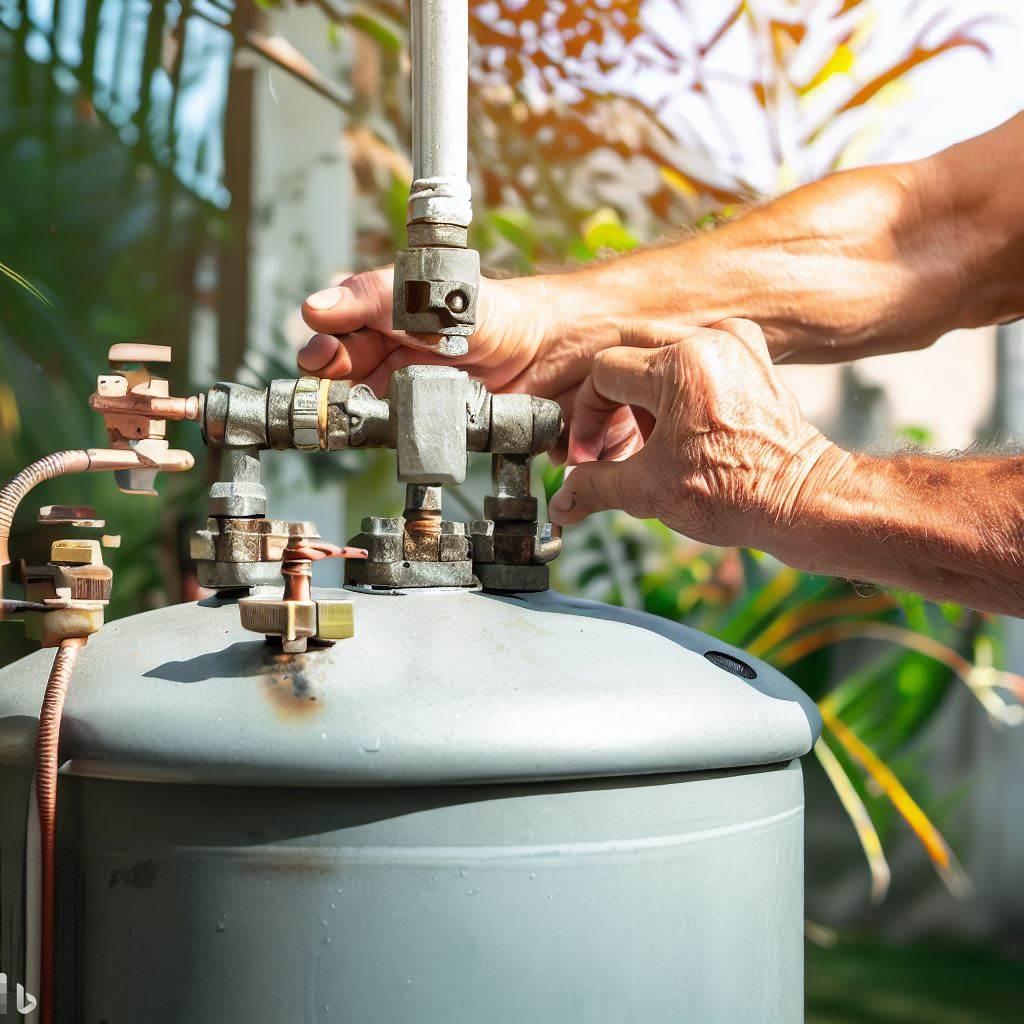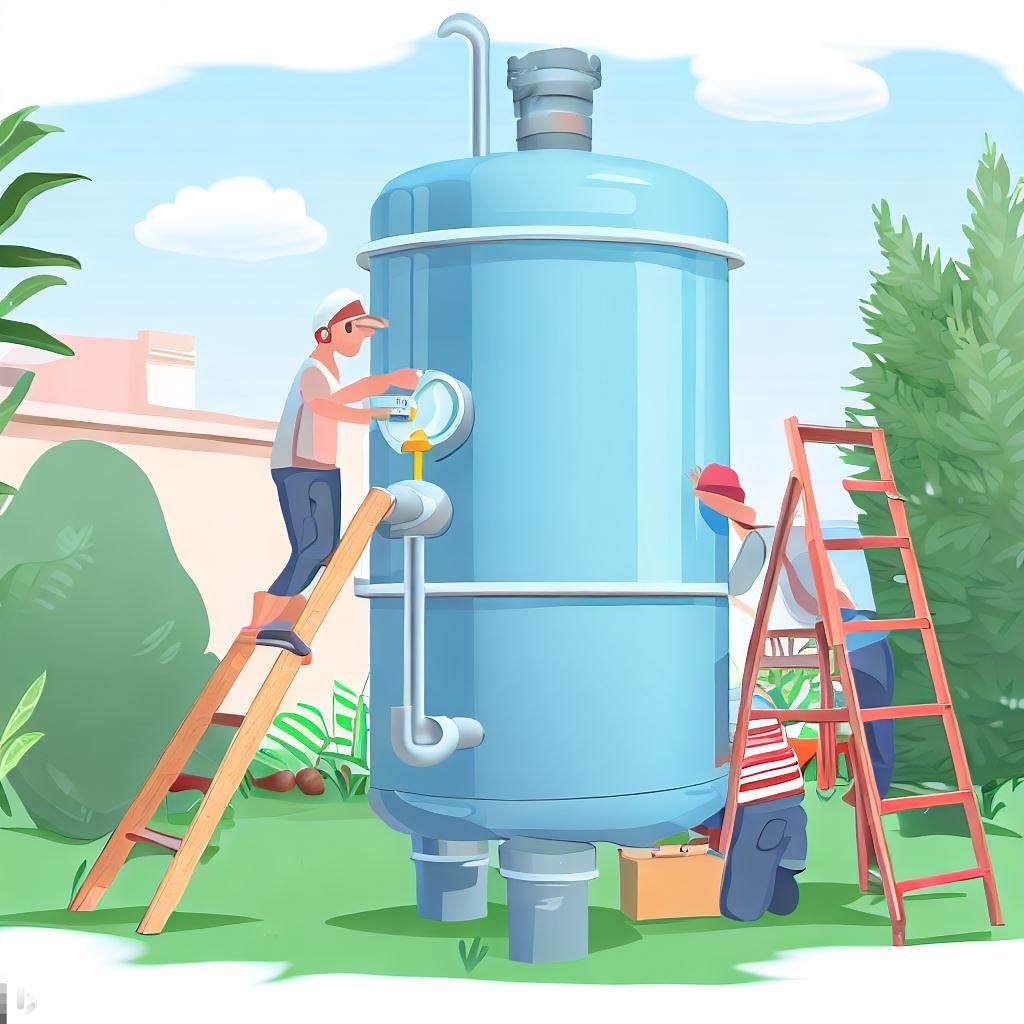Table of Contents
Moving a water heater can be tricky. But with the right knowledge and prep, it’s doable! Here’s how:
- Gather the tools and equipment you’ll need. You’ll need a dolly or hand truck, straps or ropes, and a wrench or pliers.
- Turn off the power supply to the water heater. Switch off the breaker connected to the water heater. Don’t forget this step for safety.
- Drain the water from the tank. Connect a hose to the drain valve and direct it towards an appropriate drainage area. Make sure there are no obstacles and enough space for adequate drainage.
- Disconnect the water lines and gas line. Turn off the main water valve near your hot water faucet. Open a nearby faucet or shower valve to relieve pressure. Use an adjustable wrench or pliers to loosen and detach the gas line from both ends. Handle with caution!
- Carefully maneuver and lift the water heater onto the dolly or hand truck. Securely strap or rope down the unit for safe transportation. When moving outside or downstairs, be careful with ramps or steps. Watch out for low ceilings and narrow doorways.
- Once the water heater’s at its new location, you can begin installing. Reconnect the water lines and gas line. Make sure all connections are secure and leak-free.

Key Takeaways
- 1. Start by turning off the power and gas supply to the water heater to ensure safety during the moving process.
- 2. Drain the water heater completely by attaching a hose to the drain valve and directing the water to a suitable drainage area.
- 3. Disconnect the water supply lines and the gas line (if applicable) from the water heater.
- 4. Carefully disconnect the electrical connections, making sure to label them for easy reconnection later.
- 5. Use a dolly or hand truck to transport the water heater to its new location. Make sure to secure it properly to prevent any damage during transportation.
- 6. Once the water heater is in its new location, reconnect the water supply lines, gas line (if applicable), and electrical connections.
- 7. Turn on the water supply and check for any leaks. If there are any leaks, tighten the connections or replace any faulty parts.
- 8. Finally, turn on the power and gas supply to the water heater and allow it to heat up before using it again.
Preparation for moving a water heater
Preparing to move a water heater? Make sure to:
- Shut off power and water.
- Disconnect lines and drain tank.
- Detach from current location.
- Use a dolly for transportation.
- Consult building codes/rules.
- Have required tools ready.
- Consider hiring professional plumber.
- Prevents damage/inconvenience.
Ending a water heater is like ending a bad relationship – heartache and relief!
Disconnecting the water heater

To safely move a water heater, follow these steps:
- First, shut off the power. Flip the breaker in the electrical box.
- Then, turn off the water supply by turning the valve on the cold water line clockwise.
- Next, connect a hose to the drain valve at the bottom of the tank. Release the hot water safely outside.
- Use an adjustable wrench to detach both the incoming and outgoing water lines. Be ready for some water to come out.
- If your water heater is gas-powered, turn off its gas supply. Then rotate the shut-off valve near your unit perpendicular to the gas line.
- Be careful! A fully functioning water heater has hot components that can cause burns or injuries.
- Check local building codes or regulations before attempting any work on the plumbing system. There may be specific requirements regarding relocating a water heater.
Moving the water heater

- Before beginning, shut off the power and water supply. This will ensure safety.
- Drain the tank by connecting a hose to the drain valve and directing it to a suitable drainage location. Open the valve and let all the water flow out.
- Disconnect both the cold-water input pipe and hot-water output pipe from their respective connections. Use a wrench or pliers, if necessary.
- Securely strap or lift the water heater, using an assistant or a sturdy dolly. Balance and stabilize it before attempting to lift. Lift with your legs, not your back.
- Reinstall in new location. Connect both hot and cold-water pipes securely with fittings.
- Turn on the water supply valve and restore power, or relight pilot lights.
- Check building codes to ensure compliance with local building codes.
- Consult a professional plumber if unsure about any aspect of moving the water heater.
- Proper planning and execution are key to ensure a smooth transition.
Reinstalling the water heater
- Choosing a spot for the water heater, considering access to water lines, gas connections and building codes, was the first step.
- Clear the area and make sure there’s enough space for ventilation.
- Then, turn off the electricity or gas supply to the old water heater, close the hot and cold water valves and drain any remaining water.
- Disconnect the electrical or gas connections and water supply lines, using the right tools.
- Moving the water heater? Use a dolly or hand truck with straps to safely transport it, being careful of stairs or uneven surfaces.
- At the new location, reconnect all the components including the electrical or gas connections and water supply lines. But don’t over-tighten connections!
- Finally, turn on the utilities and run hot water through a nearby faucet to test for any leaks or irregularities in temperature and pressure.
Getting a professional plumber is a great idea! My family recently moved into a new home and hired one. They handled the installation quickly and everything was secure and compliant with building codes. It’s a good reminder that complex plumbing tasks require professional help.
Testing the water heater
Steps:
- Check for leaks. Inspect water heater connections, valves and pipes. Look for drips or puddles. Fix them fast.
- Test the temperature and pressure relief valve. Lift the lever and release. Air or hot water should come out. If not, get help from a plumber.
- Measure the hot water temp. Use a thermometer. Aim for 120 degrees Fahrenheit. Adjust thermostat if needed.
- Test water heater annually. Watch out for strange noises, bad hot water supply or higher bills. Get professional help if needed.
- To keep water heater running, drain and flush it annually.
- Insulate the pipes connected to it.
- Install thermal expansion tank if home has closed plumbing system.
- Insulate the tank for better energy efficiency.
- Keep testing the water heater.
- Enjoy reliable hot water.
Frequently Asked Questions
How do I move a water heater by myself?
Moving a water heater by yourself can be a challenging task. Follow these steps for a safe and successful move: – Turn off the gas or electricity supply to the water heater. – Shut off the water supply and drain the tank. – Disconnect the water lines and gas line (if applicable). – Use a dolly or hand truck to carefully transport the water heater to its new location. – Connect the water lines and gas line (if applicable) at the new location. – Fill the tank with water, turn on the gas or electricity, and test for any leaks.
Can I move a water heater outside?
It is possible to move a water heater outside, but it requires careful planning and proper installation. Consult a professional plumber to ensure the installation meets all building codes and safety regulations. They will also advise you on the necessary steps to protect the water heater from weather elements and ensure it operates efficiently.
How do I move a water heater down stairs?
Moving a water heater down stairs can be physically demanding. Here’s a step-by-step guide: – Empty and drain the tank. – Disconnect the water lines and gas line (if applicable). – Securely fasten the water heater to a dolly or hand truck. – Use a sturdy ramp to guide the water heater down the stairs. – Have someone assist you in safely navigating and controlling the descent. – Once downstairs, reconnect the water lines and gas line (if applicable) at the new location.
How much does it cost to move a water heater?
The cost of moving a water heater can vary depending on various factors, such as the distance of relocation, complexity of the installation, and any additional plumbing or electrical work required. It is recommended to obtain quotes from professional plumbers or contractors to get accurate cost estimates for your specific situation.
Do I need a professional plumber to move a water heater?
While it is possible to move a water heater yourself, it is generally recommended to hire a professional plumber. They have the necessary tools, expertise, and knowledge to handle the task safely and efficiently. A professional plumber can also ensure the water heater is properly connected, meets building codes, and minimizes the risk of any damage or issues.
How do I transport a water heater in a car?
Transporting a water heater in a car can be challenging due to its size and weight. If it can fit securely in your vehicle, use ratchet straps or bungee cords to secure it tightly. Alternatively, consider renting a truck or a van to safely transport the water heater. Make sure to pad and secure the water heater to prevent any damage during transportation.
Conclusion
Moving a water heater can be tricky. But, if you have the right preparations and knowledge, it is possible to do it yourself.
Moving a water heater is possible with careful planning and execution. Take precautions and seek professional help if needed. One homeowner did it himself and relocated the water heater without any damage or issues.
